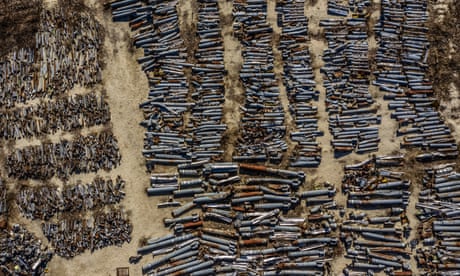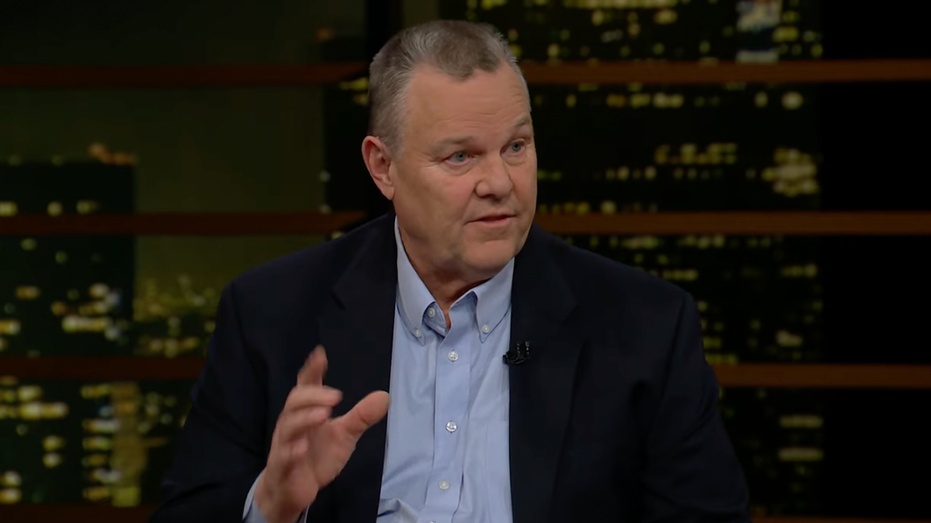- by foxnews
- 09 Mar 2025
‘It’s half of what was shot at us’: Kharkiv’s Russian missile cemetery
‘It’s half of what was shot at us’: Kharkiv’s Russian missile cemetery
- by theguardian
- 23 Mar 2023
- in news

During the first few months of Russia's full-scale invasion of Ukraine, the cruise missiles fired by Moscow at its neighbour remained embedded for days at a time in the buildings and streets of the north-eastern province Kharkiv.
Then, one by one, officials working for Ukrainian prosecutors recovered, registered and catalogued them, before moving them to a fenced-off area in an industrial district of Kharkiv city that has become known as the "missile cemetery". More than 1,000 explosives and the debris of rockets are lined up in rows, covering an area half the size of a football field.
Ukraine's army calculates that Russia has fired more than 5,000 cruise missiles, in addition to countless artillery rockets, since the war began. A large number have fallen on Kharkiv.
Local authorities say that one day the devices could become part of a museum to remember the atrocities of war. In the meantime, though, they hope the debris can provide information to help bring prosecutions against Russian authorities and soldiers.
"This place was created for collecting evidence of war crimes," said Dmytro Chubenko, the spokesperson for the Kharkiv region prosecutor's office. "These devices were all found in Kharkiv city. But it is approximately only half of what they shot at us. These are pieces of evidence that we hope will be used in the international criminal court."
About 95% of all the devices stored in the missile cemetery are parts of multiple launch rocket systems, including Smerch systems that can be used to carry cluster bombs, which were banned by most of the world under a 2008 treaty and have been used by Russia in areas of Ukraine where there were neither military personnel nor military infrastructure.
By analysing the types of devices fired, their flight paths and the GPS locations of where they landed, prosecutors in Kharkiv have placed dozens of Russian soldiers and officials under investigation, including Col Gen Alexander Zhuravlyov, who also took part in Russia's 2016 bombing campaign against Syria. According to multiple reports, Zhuravlyov was the only senior Russian officer who could sign off an order to launch a Smerch rocket attack on Kharkiv.
Chubenko said the study and analysis of munitions was crucial to investigating responsibility for alleged crimes on Ukrainian soil.
Munitions are marked with a series of codes denoting the manufacturer, details of refurbishment if applicable, and more rarely the military unit that handled maintenance.
"You can see the digits and letters which these missiles are marked with," Chubenko said. "With the help of those we could identify which plant produced them and sometimes which military unit stored and maintained them."
Neil Corney is a research associate at the Omega Research Foundation, an independent organisation based in the UK dedicated to providing evidence-based information about the manufacture, trade and use of military, security and police technologies. He said identifying the unit that stored missiles and rockets was key to investigating potential war crimes.
"Ideally, if you want to link the use of the munition to a crime then you need to show its chain of custody," said Corney. This chain includes where the munition was stored and maintained, its distribution to a military unit, its use, its location at the site of a potential crime, and the secure storage of its remains.
In the Kharkiv missile cemetery, prosecutors have stored some of the missiles that hit residential areas in north Saltivka and Oleksiyivka.
They have singled out a Russian general, whose name cannot be disclosed due to an ongoing investigation, who allegedly gave an order to launch at least 100 missiles from Russian-occupied northern Ukraine into the Kharkiv Institute of Physics and Technology, a hotbed of early nuclear research in the former Soviet Union.
Although the facility does not present a radiation threat, the director general of the International Atomic Energy Agency, Rafael Grossi, has said that the scale and intensity of attacks on the institute "violates all the seven indispensable nuclear safety and security pillars I outlined at the beginning of the conflict".
Chubenko said the consequences of the missile attacks could have been drastic. "Of course the Russians were aware of the nuclear research reactor being located there since it was built in the Soviet times and Rosatom [the Russian state nuclear power company] has got all the blueprints," he added.
Oleksandr Filchakov, the chief prosecutor for Kharkiv, said thousands of potential war crime and other criminal proceedings had been opened against Russian soldiers and officials in his province alone.
Authorities estimate that more than 1,700 people have been killed by Russian shelling, including 44 children, in Kharkiv city and its surroundings.
Nationwide, the office of the UN high commissioner for human rights (OHCHR) has recorded 21,965 civilian casualties since the beginning of the Russian invasion, including 8,231 deaths.
The OHCHR has noted that the actual casualty figures are much higher due to a delay in receiving information from locations experiencing intense hostilities. Reports are still pending corroboration in places including Mariupol, Lysychansk, Popasna, and Sievierodonetsk.
- by foxnews
- descember 09, 2016
'Speaker scum' on flights sparks debate among travelers: 'This is getting out of hand'
A traveler asked social media users to weigh in on flyers who play audio aloud on their devices and don't use headphones.
read more


